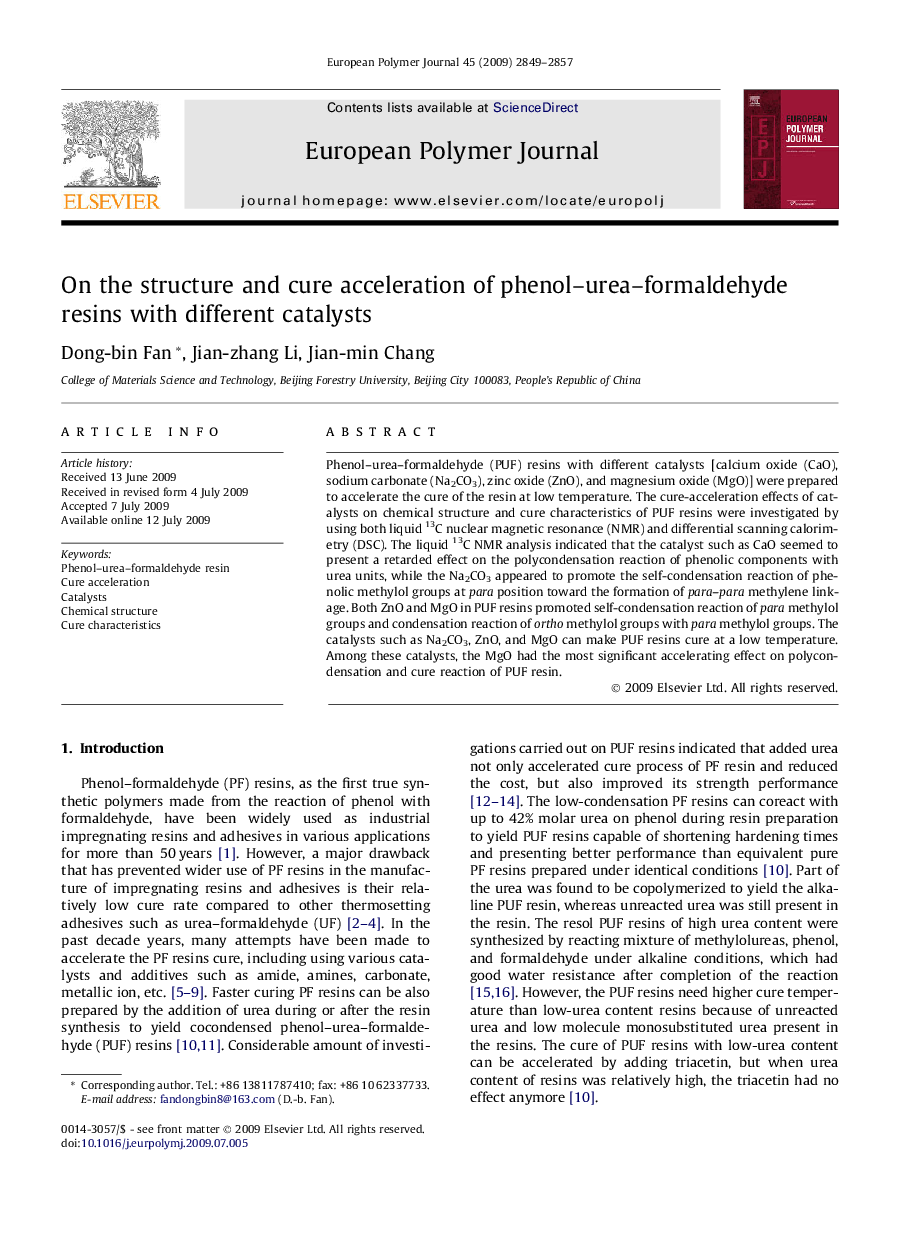| Article ID | Journal | Published Year | Pages | File Type |
|---|---|---|---|---|
| 1398417 | European Polymer Journal | 2009 | 9 Pages |
Phenol–urea–formaldehyde (PUF) resins with different catalysts [calcium oxide (CaO), sodium carbonate (Na2CO3), zinc oxide (ZnO), and magnesium oxide (MgO)] were prepared to accelerate the cure of the resin at low temperature. The cure-acceleration effects of catalysts on chemical structure and cure characteristics of PUF resins were investigated by using both liquid 13C nuclear magnetic resonance (NMR) and differential scanning calorimetry (DSC). The liquid 13C NMR analysis indicated that the catalyst such as CaO seemed to present a retarded effect on the polycondensation reaction of phenolic components with urea units, while the Na2CO3 appeared to promote the self-condensation reaction of phenolic methylol groups at para position toward the formation of para–para methylene linkage. Both ZnO and MgO in PUF resins promoted self-condensation reaction of para methylol groups and condensation reaction of ortho methylol groups with para methylol groups. The catalysts such as Na2CO3, ZnO, and MgO can make PUF resins cure at a low temperature. Among these catalysts, the MgO had the most significant accelerating effect on polycondensation and cure reaction of PUF resin.
Graphical abstractPhenol–urea–formaldehyde (PUF) resins with different catalysts [calcium oxide (CaO), sodium carbonate (Na2CO3), zinc oxide (ZnO), and magnesium oxide (MgO)] were prepared to accelerate the cure of the resin at low temperature.The following graph represents cure characteristics of the cure-accelerated PUF resins with different catalysts.Figure optionsDownload full-size imageDownload as PowerPoint slide
